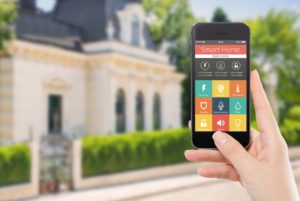BLOG
Outfitting Your Home For The Future With “Smart” Upgrades
 Nearly everyone in the modern world has invested in a smartphone, but what is the market like for smart homes? With nearly half of all Americans incorporating home automation features, there’s no doubt a market exists for high-tech upgrades. The term “smart home” can mean a variety of things. Let’s take a look at some of the most popular home upgrades on the market today.
Nearly everyone in the modern world has invested in a smartphone, but what is the market like for smart homes? With nearly half of all Americans incorporating home automation features, there’s no doubt a market exists for high-tech upgrades. The term “smart home” can mean a variety of things. Let’s take a look at some of the most popular home upgrades on the market today.
Automated Protection
Most people view their home as “smart” when it has an automated security system. Being able to turn a system off and on or hit panic buttons on your mobile device certainly classifies as smart. Take smart security a step further by adding security cameras with live feeds that can be viewed on your phone whether you’re at home or away.
Keyless Entry
Forget standard locks, and don’t worry about carrying keys. Use your mobile device to lock and unlock your doors. This definitely comes in handy when carrying an arm full of groceries.
Smart Lighting
Smart lighting allows you to control your home’s lighting via your computer or mobile device. Instead of leaving lights on when you know you’ll arrive home after dark, save money and energy by turning them on once you pull in the driveway.
Energy-Saving Thermostats
Programmable thermostats can cut your energy bill by almost $200 per year by automatically reducing your heating and cooling when you aren’t home.
Tankless Water Heaters
Heating water accounts for as much as 30% of the average home’s energy budget. The standard water heater keeps 40 to 80 gallons of water heated at all times during the day. Tankless heaters heat water on-demand, dramatically reducing utility costs and environmental impact.
Remote Controlled Shades
Closing the blinds to your windows is another way you can maintain the temperature in your home and remote-controlled shades can help you conserve energy even when you’re not at home.
Fiber-Optic Technology
Fiber-optic technology is a great (and even green) alternative to traditional cable and internet coaxial copper wires because it lasts longer, is more energy efficient and is safer because the cables produce less heat.
You can have more wireless devices in your home operating simultaneously with little-to-no effect on internet speed with this technology’s capacity for greater speed.
